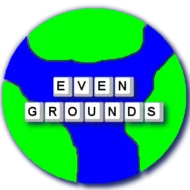Recently I came across a creative video description service for blind and visually impaired people. The description is text based, and meant to be used by listening to short segments of the video and reading the descriptions. This way it can have more context than an audio described video, while it is fully accessible for deaf blind users. One can request any YouTube videos to be described up to 15 minutes. This service is free of charge.
I asked Zsigmond Peter, the director of the Videó a Vakoknak Alapítvány, in English Video for the Blind Foundation to describe the project for my readers.
How did it start?
The project was conceived by father and son, Zsigmond Péter and Gábor Péter.
Zsigmond has been blind since childhood, and Gábor is visually impaired.
Gábor says about the beginnings: “Like in any family with a visually impaired person, those who can see help out in everyday life. This includes reading a book out loud, or describing what can be seen on TV or in a video. This is what happened in our family too. We often described to my father what could be seen in a video, so he could fully understand the message and the content. After a while, we thought of collecting these descriptions so that other visually impaired people could also benefit from them.
We aim to create a community where sighted people can create video descriptions online for their visually impaired peers.”
How does the project work?
Firstly, there is a web application at https://app.videoforblind.com where visually impaired people can read video descriptions.
Here, blind people can request descriptions for specific videos or specify topics of interest. The foundation’s staff also collects descriptions of videos that provide practical knowledge or an experience.
Secondly, at https://portal.videoforblind.com, volunteers can find videos currently needing descriptions, create them, and then publish them.
Why was the foundation created from the project, and what are its goals?
We humans mostly acquire information about the world around us through vision. It is therefore natural that we mostly pass on our knowledge visually, using diagrams, pictures, and films. However, this means that the blind and visually impaired miss out on a lot of information. But they too need useful knowledge for making decisions and improving their quality of life.
The foundation’s goal is to consciously assess which essential knowledge is conveyed visually, and then to facilitate its transmission to the visually impaired. That’s why the foundation deals with describing the visual contents of images, artworks, videos, etc.
We pay special attention to deaf-blind individuals. We do not only describe the visual content but also transcribe the spoken words in videos.
So, many video descriptions include a transcript of the spoken text. The descriptions are textual, so they can be read with a Braille display.
One of our future goals is to help visually impaired children better understand concepts related to vision. This will help them better understand the thoughts that sighted people express through visual experience-related expressions.
Another future goal is to internationalize this initiative. Descriptions are already available in two languages, Hungarian and English, on the website there are 400 in Hungarian and 100 in English. In the future, we would like to publish descriptions in other languages.
Why are video descriptions useful for the visually impaired?
- They gain access to knowledge that they otherwise cannot obtain, aiding students in learning and adults in acquiring knowledge.
- Since the narrations include spatial descriptions, this helps blind people think spatially, contributing to their ability to orient themselves in their environment and navigate better.
- The descriptions also help blind people recognize more connections between things, aided by descriptions of diagrams and graphs.
- Reading the descriptions helps them better understand visual expressions, aiding their communication with sighted people when such expressions are used.
- Learning about different types of movements, shapes, and colors provides the visually impaired with many new experiences.
- For those who became blind later in life, descriptions help recall experiences they saw during their sighted years.
- Descriptions are also useful for those who like to travel.
For example, they can request descriptions of:
- places they have visited;
- future travel destinations;
- or landscapes and cities that interest them.
Why did the Video for the Blind Foundation choose the method of pausing the video for reading the narration?
This question came up because, in the case of audio narration, the video continues to play while the narration occurs during breaks in speech.
The foundation’s staff found that for videos used primarily for learning and acquiring knowledge, the breaks in speech are not sufficient to convey all the essential information presented visually. The video stops at each scene to allow enough time to communicate what was seen. Our method can be illustrated as follows: The visually impaired person watches the video with a friend. At each scene, they pause the film, and the friend describes what was visible in that scene.
The description creators are like such friends, who describe to the visually impaired what they saw in each video.
Since the descriptions are textual, they can be searched, and deaf-blind individuals can read them with a Braille display.
Descriptions can be read on the following website, by default in English, with 20 descriptions per page. You can navigate through pages and switch languages as needed.
The link:
https://app.videoforblind.com/latest-videos
We are also happy to create video descriptions in English. Please contact us at this email address: feedback @ videoforblind dot com.


No comments! Be the first commenter?